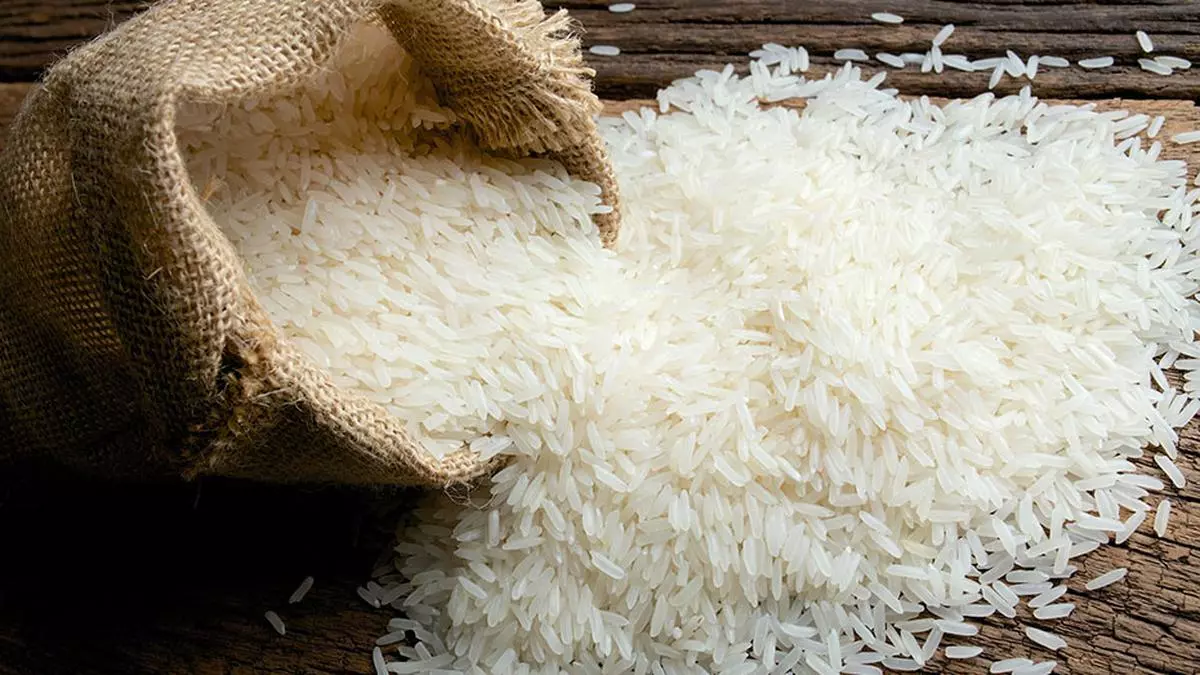Global rice prices may gain in Q3 after clear picture on weather, production emerges
Rice prices in the global market have currently dropped to levels of $600/tonne and below but they will likely gain around June-July when a clear picture emerges on production and monsoon behaviour in Asia.
The period will coincide with results for the Lok Sabha elections in India, which may ease the current curbs on exports if its buffer stocks are good, traders and analysts said. “India’s parboiled prices are currently quoted at $515-520 a tonne free-on-board. Prices have declined on slack demand and the Food Corporation of India finishing its purchases,” said a New Delhi-based exporter.
A trade analyst said prices have come down as shipments of other varieties of rice such as steamed and white have come to a halt after Indian Customs officials tightened the scrutiny of consignments.
Down to near $600/tonne
According to the Thai Rice Exporters Association, India’s parboiled rice is quoted at $537-541 a tonne cost and freight compared to $604 quoted by Thailand and $601-605 quoted by Pakistan.
Prices of white rice have dropped to $602 a tonne for shipments from Thailand and for consignments from Pakistan and Vietnam they are down to $575-585 a tonne. India banned exports of white rice on July 20, 2023, as part of its efforts to cool down surging foodgrain prices.
According to data available from the Food Corporation of India (FCI), paddy procurement during the kharif season was 70.86 million tonnes (48 million tonnes of rice equivalent), while rabi procurement has topped one million tonnes (mt) — 0.67 million tonnes (mt) rice equivalent.
Last year, paddy procurement was 76.98 mt (51.54 mt) from kharif and that from rabi purchases were 1.15 mt (0.77 mt).
Temporary blip
According to the Ministry of Agriculture and Farmers’ Welfare, India’s rice production during the kharif and rabi seasons has been estimated at 123.83 mt compared with 125.51 mt in 2022-23. Zaid or summer rice production makes up nearly 10 mt and its outcome is awaited. “The fall in global rice prices is temporary. Prices will likely react based on sowing in India, Pakistan, Thailand, Vietnam and other countries such as Indonesia and the Philippines, and rains during monsoon,” said S Chandrasekaran, a New Delhi-based trade analyst.
Besides weather, there are concerns over food security in view of the geopolitical crisis in the Gulf, Taiwan region and Europe (Ukraine war).
With US elections scheduled in November this year, some countries such as China could try to build stocks. It will put pressure in the market, he said.
Thai output down
Thailand’s Bangkok Post quoted Chookiat Ophaswongse, President of Thai Rice Exporters Association, as saying that as long as India maintains its ban on white rice exports, local shippers should be optimistic that Thai rice prices should stay relatively high in the first half of this year. He predicted that rice prices could gain in the current quarter.
According to the US Department of Agriculture, Thailand’s rice production in 2023-24 is projected at 19.9 mt, down 5 per cent from 2022-23 due to lower water availability. Vietnam’s production is estimated to be 43.2 mt versus 43.1 mt a year ago. However, both nations may have lower carryover stocks in view of higher rice exports during 2023-24 in view of India’s export restrictions.
The International Grains Council said in its latest outlook that world rice output is estimated marginally lower besides drop in total use and reserves. However, 2024-25 could see an uptrend, though expansion in trade could be limited as India’s curbs could continue.
Ban export reason
“We are waiting for the Indian government to allow exports to resume. For now, our activities have been curbed to contract exports of government-to-government deals,” said M Madan Prakash, President of Agricultural Commodities Exporters Association.
Chandrasekaran said countries such as Indonesia and the Philippines are also procuring rice actively in the global market, mainly from Vietnam and Thailand.
India, initially, banned exports of broken rice in September 2022, when it also imposed a 20 per cent duty on white rice shipments. In July 2023, it banned white rice exports and levied a 20 per cent duty on parboiled rice shipments besides fixing a minimum export price of $950/tonne on basmati rice.
Since February 2024, Customs officials, particularly in Thoothukudi and Chennai ports, have tightened the scrutiny of rice exports following complaints of under-invoicing and shipments of white and steamed rice in the garb of parboiled rice.
Analysts said one hope for rice-consuming nations, particularly in Africa, is the prediction of La Nina weather, which brings more rains to Asia, from July this year. During 2023-24, rice production was affected by El Nino weather, which emerged in June 2023 resulting in dry weather across Asia, particularly India and Thailand.
